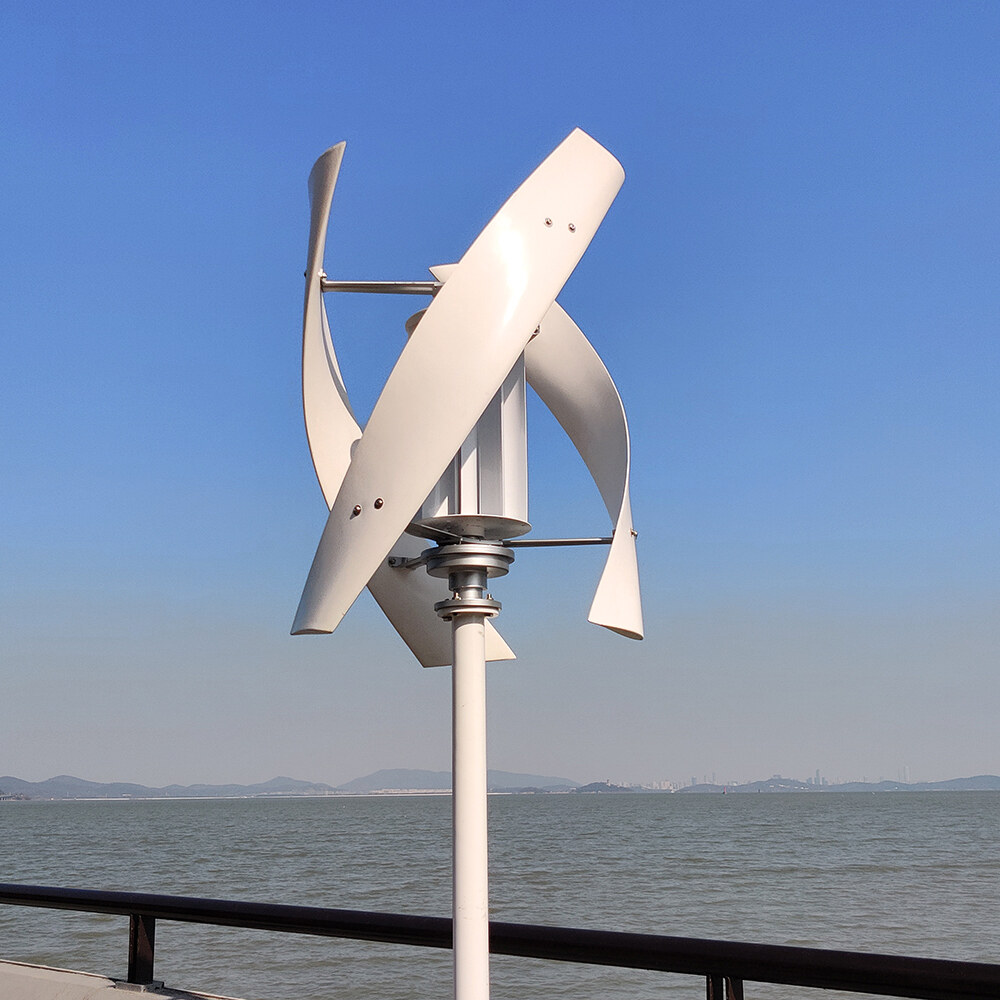Email format error
Email cannot be empty
Email already exists
6-20 characters(letters plus numbers only)
The password is inconsistent
Email format error
Email cannot be empty
Email does not exist
6-20 characters(letters plus numbers only)
The password is inconsistent


Harnessing the Power of Vertical Axis Wind Turbines: The Future of Windmills
The landscape of renewable energy is ever-evolving, and one of the most promising advancements in this field is the vertical axis wind turbine (VAWT). Unlike their horizontal counterparts, VAWTs offer a range of benefits that make them an exciting prospect for the future of wind energy. In this blog, we will explore the fascinating world of vertical axis wind turbines, uncovering their advantages, applications, and potential to revolutionize the way we harness wind power.
What is a Vertical Axis Wind Turbine?
A vertical axis wind turbine is a type of windmill where the main rotor shaft is set vertically. This design is in stark contrast to the more common horizontal axis wind turbines (HAWTs), where the rotor shaft is horizontal. The vertical axis design allows the turbine to capture wind from any direction, making it highly efficient in variable wind conditions.
Key Features of VAWTs
1. Omni-Directional Wind Capture: One of the standout features of vertical axis wind turbines is their ability to capture wind from any direction. This is a significant advantage over HAWTs, which need to be oriented into the wind.
2. Compact Design: VAWTs generally have a smaller footprint, making them ideal for urban and suburban settings where space is limited.
3. Lower Noise Levels: The design of VAWTs typically results in quieter operation compared to HAWTs, making them more suitable for residential areas.
4. Ease of Maintenance: With most components located near the ground, VAWTs are easier to maintain and service.
Types of Vertical Axis Wind Turbines
There are two main types of vertical axis wind turbines: Darrieus and Savonius.
Darrieus Turbines
Darrieus turbines have a characteristic eggbeater shape and are known for their high efficiency and power output. They operate on the lift principle, similar to airplane wings, and can achieve high rotational speeds.
Savonius Turbines
Savonius turbines have a simpler design, often resembling an S-shape when viewed from above. They operate on the drag principle, making them less efficient than Darrieus turbines but highly reliable and effective at lower wind speeds.

Advantages of Vertical Axis Wind Turbines
1. Flexibility in Wind Conditions
The ability of vertical axis wind turbines to capture wind from any direction makes them particularly effective in areas with turbulent or variable wind patterns. This flexibility means they can be installed in a wider range of locations, from urban rooftops to rural farms.
2. Cost-Effective Installation and Maintenance
The ground-level placement of key components in VAWTs simplifies installation and reduces maintenance costs. This is a stark contrast to HAWTs, where the nacelle and rotor are often perched atop tall towers, requiring cranes and specialized equipment for servicing.
3. Environmental Benefits
VAWTs offer several environmental benefits. Their quieter operation means they are less disruptive to wildlife and humans, and their smaller size means they can be integrated into existing structures without significant visual impact.
4. Energy Efficiency
Although traditionally considered less efficient than HAWTs, advancements in VAWT technology are closing the gap. Innovations in materials, aerodynamics, and design are leading to significant improvements in the performance and efficiency of vertical axis wind turbines.
Applications of Vertical Axis Wind Turbines
Urban Environments
One of the most exciting applications for vertical axis wind turbines is in urban environments. Their compact design and low noise levels make them ideal for installation on rooftops, in courtyards, and along streets. By integrating VAWTs into urban infrastructure, cities can generate renewable energy locally, reducing reliance on centralized power plants.
Remote and Off-Grid Locations
VAWTs are also well-suited for remote and off-grid locations where traditional power sources are not available. Their ability to operate in variable wind conditions makes them a reliable source of power for remote communities, weather stations, and telecommunications towers.
Agricultural Settings
Farmers can benefit from the use of vertical axis wind turbines to power irrigation systems, barns, and other farm infrastructure. The ability to install these turbines close to the ground without extensive infrastructure makes them an attractive option for rural applications.
The Future of Vertical Axis Wind Turbines
The future of vertical axis wind turbines is bright. Continued research and development are leading to innovative designs that improve efficiency, reduce costs, and expand applications. As the world continues to shift towards renewable energy, VAWTs are poised to play a significant role in the transition.
Innovations on the Horizon
1. Advanced Materials: The use of lightweight, durable materials is enhancing the performance and longevity of VAWTs.
2. Aerodynamic Improvements: Better understanding of aerodynamics is leading to more efficient blade designs and improved power output.
3. Hybrid Systems: Combining VAWTs with solar panels and battery storage systems can create hybrid renewable energy solutions that provide consistent power regardless of weather conditions.
Conclusion
Vertical axis wind turbines represent a promising and versatile solution for harnessing wind energy. Their unique design and numerous advantages make them suitable for a wide range of applications, from urban environments to remote locations. As technology continues to advance, the role of VAWTs in the renewable energy landscape will only grow, offering a sustainable and efficient way to power our world. By embracing this innovative technology, we can take a significant step towards a greener, more sustainable future.

